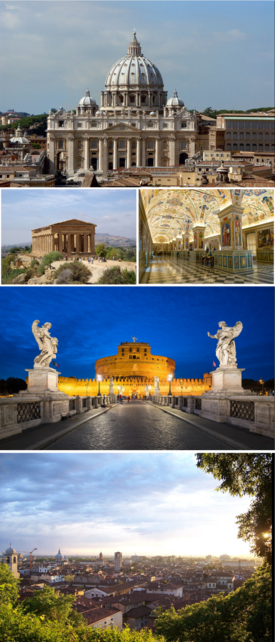Deopolis: Difference between revisions
No edit summary |
No edit summary |
||
| Line 52: | Line 52: | ||
'''Deopolis''', known in [[List of Spoken Languages on Eurth|Salvian]] as '''Deopolia''', is the {{wp|capital}} of [[Sanctum Imperium Catholicum|Salvia]], as well as the regional capital of the [[Regions of Salvia|Ziogolora region]]. With a population of 2,232,198, it is the most populated city in Salvia and the third largest in [[Marenesia]]. The city is also the center of the Deopolis Metropolitan Area, which has a population of 4,535,901, making it the most populous metropolitan city in Salvia. It sits on the eastern seaboard of Salvia and borders the [[Regions of Salvia|Ascloni region]] to the north and the [[Regions of Salvia|Lavazza region]] to the south. | '''Deopolis''', known in [[List of Spoken Languages on Eurth|Salvian]] as '''Deopolia''', is the {{wp|capital}} of [[Sanctum Imperium Catholicum|Salvia]], as well as the regional capital of the [[Regions of Salvia|Ziogolora region]]. With a population of 2,232,198, it is the most populated city in Salvia and the third largest in [[Marenesia]]. The city is also the center of the Deopolis Metropolitan Area, which has a population of 4,535,901, making it the most populous metropolitan city in Salvia. It sits on the eastern seaboard of Salvia and borders the [[Regions of Salvia|Ascloni region]] to the north and the [[Regions of Salvia|Lavazza region]] to the south. | ||
Founded under the name of Ziogolana sometime in the 6th century BC, the city grew in size and prominence during the [[First Salvian Imperium]] and became the imperial capital | Founded under the name of Ziogolana sometime in the 6th century BC, the city grew in size and prominence during the [[First Salvian Imperium]] and became the imperial capital, and is regarded by many as the first metropolis in [[Marenesia]]. Falling into ruin amidst constant {{wp|Looting#In_armed_conflict|sackings}} during political turmoil in the 7th century AD, the area remained largely uninhabited until its reconstruction by [[King Joseph I of Salvia|King Joseph I]], who upon coronation declared it the capital. The city was swiftly repopulated and acted as the capital of the [[Divine Imperium of Salvia|Holy Salvian Catholic Empire]] for most of its [[Divine Imperium of Salvia#History|6 century history]]. Both the popes and Salvian kings promoted the sciences, culture, and banking in order to make Deopolis the cultural and economic capital of Marenesia - they largely succeeded, with Deopolis becoming one of the major centers of the early modern Renaissance (Salvian: ''Magnaere Progresient''). During this period, poets and artists such as [[Eugune de la Rose]] and Bero Carcinitti would coin the nickname "Capital of Salvians" (Salvian: ''Caput dox Salveae'') as the capital became the center of {{wp|bourgeoisie]] and noble Salvian life during the early modern era. | ||
{{Salvia}} | {{Salvia}} | ||
{{Eurth}} | {{Eurth}} | ||
Revision as of 01:46, 1 September 2020
Deopolis | |
|---|---|
 From top, left to right: St. Murphy's Cathedral, ancient Friulian temple on the outskirts of the city, the Leotine Hall in Leotine Chapel, Castuhinga dox Anmua, and a view of the city from Milvian Heights | |
| Etymology: Aroman for "City of God" | |
| Nickname(s): Ziogolora (Friulian, historical) Capital Caput dox Salveae (Salvian) | |
| Motto(s): Atua dox Amare, Atua dox Iustito "God of Love, God of Justice" | |
| Country | |
| Region | Ziogolora |
| Province | Deopolis |
| Communes | Aslanai Copiatoli Gaumonte Marcati |
| Founded | 6th century BC |
| Administrative division | 4 communes |
| Government | |
| • Mayor | Petior Hialgo (TP) |
| Area | |
| • Capital city | 105.4 km2 (40.7 sq mi) |
| Population (1 January 2020 (est)) | |
| • Capital city | 2,232,198 |
| • Density | 21,000/km2 (55,000/sq mi) |
| • Metro | 4,535,901 |
| Demonym | Deopolisian(s) |
| Time zone | UTC+3 (Central Adlantic Time) |
| Salvian Postal Code (SPC) | 00001–00020, 00023 |
Deopolis, known in Salvian as Deopolia, is the capital of Salvia, as well as the regional capital of the Ziogolora region. With a population of 2,232,198, it is the most populated city in Salvia and the third largest in Marenesia. The city is also the center of the Deopolis Metropolitan Area, which has a population of 4,535,901, making it the most populous metropolitan city in Salvia. It sits on the eastern seaboard of Salvia and borders the Ascloni region to the north and the Lavazza region to the south.
Founded under the name of Ziogolana sometime in the 6th century BC, the city grew in size and prominence during the First Salvian Imperium and became the imperial capital, and is regarded by many as the first metropolis in Marenesia. Falling into ruin amidst constant sackings during political turmoil in the 7th century AD, the area remained largely uninhabited until its reconstruction by King Joseph I, who upon coronation declared it the capital. The city was swiftly repopulated and acted as the capital of the Holy Salvian Catholic Empire for most of its 6 century history. Both the popes and Salvian kings promoted the sciences, culture, and banking in order to make Deopolis the cultural and economic capital of Marenesia - they largely succeeded, with Deopolis becoming one of the major centers of the early modern Renaissance (Salvian: Magnaere Progresient). During this period, poets and artists such as Eugune de la Rose and Bero Carcinitti would coin the nickname "Capital of Salvians" (Salvian: Caput dox Salveae) as the capital became the center of {{wp|bourgeoisie]] and noble Salvian life during the early modern era.
